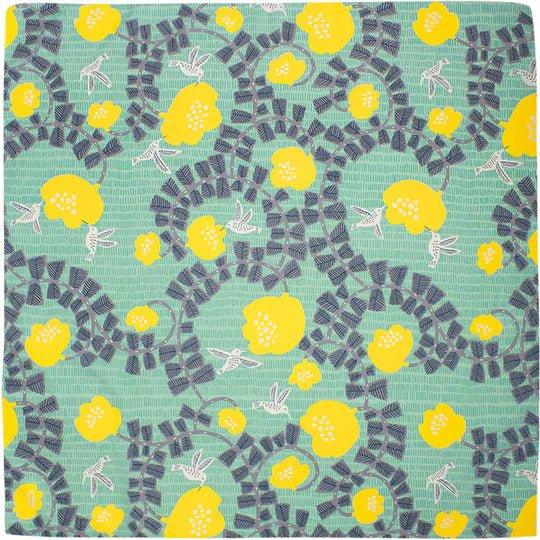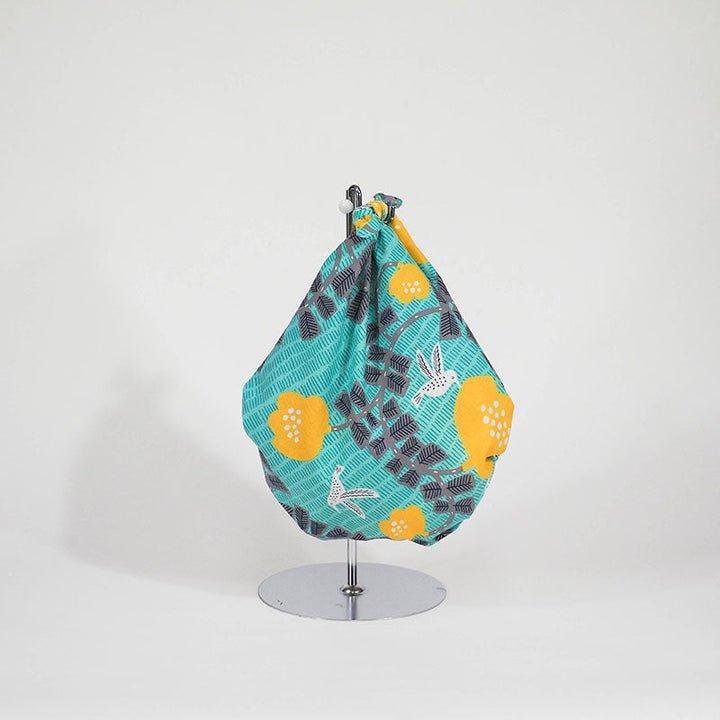Musubi
Art Furoshiki (Hummingbird) 70cm x 70cm
Art Furoshiki (Hummingbird) 70cm x 70cm
Couldn't load pickup availability
A medium size Furoshiki with a beautiful hummingbird pattern. Perfect size for wrapping family size bento box or create your own pouch size bag.
【The story of the Hummingbird】 “Kurikindi, the golden hummingbird”, a story from South America, impresses people all over the world and makes us realize small efforts of each one of us can lead us to the brighter future. Ivy is known as an auspicious motif for its strong vitality.
|
What's Furoshiki
Furoshiki is a square piece of cloth or fabric traditionally used to wrap and or to transport items for over a thousand years in Japan. The first furoshiki was used during the Nara period (AD 710 to 794). While the name has changed, the form has been handed down without much change. It is a traditional Japanese cultural item created by the thoughtful wisdom of the Japanese people.
Furoshiki usage declined in the post-war period, in large part due to the proliferation of paper and plastic bags available to shoppers. In recent years, however, it has seen a renewed interest as environmental protection has become a greater concern.
Nowadays, Furoshiki is used in many different ways. You can wrap and tie each corner to suit the size and shape of the contents within. In this way, it is very useful to carry items. It also has become increasingly popular for gift wrapping.
It is light, compact, washable and reusable. It can be used in so many ways!!
We can’t wait to share all our ideas of how to use them with you. Furoshiki will become a MUST have in your sustainable living lifestyle.
Made by Yamada-Sen-i
Yamada sen-i Co. was founded in 1937 as a manufacturer of Furoshiki. The company has produced hundreds of different Furoshiki using various dying and weaving techniques and has been focusing on promoting the use of Furoshiki in everyday life.
The name of its Furoshiki brand “MUSUBI” comes from “born(生す/musu)” and “beauty(美/bi)” in Japanese. Additionally, “MUSUBI” means “a knot” and “to tie” MUSUBI produce and sell hundreds of different Furoshiki using various dying and weaving techniques such as double-sided dying.
Share




